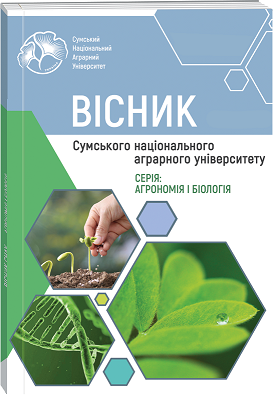Quantitive changes of enzyme activity in wheat induced by Streptomyces sp. Strain HU2014
Abstract
Biocontrol microorganism have a diverse range of activities and they have been focused on potential biocontrol agents in agriculture. They can induce plant defensed response and enhance plant disease resistance. Streptomyces sp. produce active metabolites that can inhibit the growth of phytopathogens. Induced resistance is usually indicated by the activity of Peroxidase (POD), Polyphenoloxidase (PPO), and Phenylalanine ammonia-lyase (PAL) or other defense enzymes. The related reports mainly focused on disease control or promoting growth of cash crops or vegetables, but less on wheat presently. Moreover, the information about the concentration of fermentation broth and mycelia of Streptomyces affected the quantitative changes of defensed enzyme activities is limited. In this study, we started from isolating a Streptomyces strain, named S. sp. strain HU2014, and demonstrated (POD), (PPO), (PAL) enzymes in different concentration of the mycelia (M) and extracellular filtrate (EF) of the strain with the application of soil drench treatment. The enzyme activities were determined by visible spectrophotometry. The results showed that the activities of POD and PAL at the concentration of 103-fold dilution of the EF increased significantly to some extent in comparison with untreated control, by 173.86 % (P < 0.05) and 71.92 % (P < 0.05), respectively. In the range of different concentration of the M, POD and PPO activities were enhanced with the increasing of dilution ratio, but the difference was not significant. It is expected to be an excellent resource for the development of new biological preparations.
References
2. Ahsan, T., Chen, J., Zhao, X., Irfan, M., & Wu, Y. (2019). Exometabolomic study of extracellular metabolites in tobacco plant induced by ethyl acetate extracts of Streptomyces diastatochromogenes KX852460. Journal of Radiation Research and Applied Sciences, 12(1), 157‒165. doi: 10.1080/16878507.2019.1618584
3. Aydaş, S. B., Ozturk, S., & Aslım, B. (2013). Phenylalanine ammonia lyase (PAL) enzyme activity and antioxidant properties of some cyanobacteria isolates. Food chemistry, 136(1), 164‒169. doi: 10.1016/j.foodchem.2012.07.119
4. Bignell, D. R., Huguet-Tapia, J. C., Joshi, M. V., Pettis, G. S., & Loria, R. (2010). What does it take to be a plant pathogen: genomic insights from Streptomyces species. Antonie Van Leeuwenhoek International Journal of General and Molecular Microbiology, 98(2), 179‒194. doi: 10.1007/s10482-010-9429-1
5. Boukaew, S., Prasertsan, P., Troulet, C., & Bardin, M. (2017). Biological control of tomato gray mold caused by Botrytis cinerea by using Streptomyces spp. Biocontrol, 62(6), 793‒803. doi: 10.1007/s10526-017-9825-9
6. Bulgarelli, D., Schlaeppi, K., Spaepen, S., Van Themaat, E. V. L., & Schulze-Lefert, P. (2013). Structure and functions of the bacterial microbiota of plants. Annual review of plant biology, 64, 807‒838. doi: 10.1146/annurev-arplant-050312-120106
7. Burgerjon, A., & Dulmage, H. (1977). Industrial and international standardization of microbial pesticides - I. Bacillus thuringiensis. Entomophaga, 22(2), 121‒129. doi: 10.1007/BF02377833
8. Cannon, R. J. (1993). Prospects and progress for Bacillus thuringiensis‐based pesticides. Pesticide Science, 37(4), 331-335. doi: 10.1002/ps.2780370405
9. Chater, K. F. (2006). Streptomyces inside-out: a new perspective on the bacteria that provide us with antibiotics. Philosophical Transactions of the Royal Society B: Biological Sciences, 361(1469), 761‒768. doi: 10.1098/rstb.2005.1758
10. Cheng, G., Huang, Y., Yang, H., & Liu, F. (2014). Streptomyces felleus YJ1: potential biocontrol agents against the sclerotinia stem rot (Sclerotinia sclerotiorum) of oilseed rape. Journal of Agricultural Science, 6(4), 91‒98. doi:10.5539/jas.v6n4p91
11. Doerge, D. R., Divi, R. L., & Churchwell, M. I. (1997). Identification of the colored guaiacol oxidation product produced by peroxidases. Analytical biochemistry, 250(1), 10‒17. doi: 10.1006/abio.1997.2191
12. Farag, M. A., Zhang, H., & Ryu, C. (2013). Dynamic chemical communication between plants and bacteria through airborne signals: induced resistance by bacterial volatiles. Journal of Chemical Ecology, 39(7), 1007‒1018. doi: 10.1007/s10886-013-0317-9
13. Hennessy, R. C., & Stougaard, P. (2017). Transcriptomic profiling of microbe– microbe interactions reveals the specific response of the biocontrol strain P. fluorescens In5 to the phytopathogen Rhizoctonia solani. Bmc Research Notes, 10(1), 1‒9. doi: 10.1186/s13104-017-2704-8
14. Jin, N., Lu, X. L., Wen, Y., Liu, Q., & Jian, H. (2016). Effect of Streptomyces rubrogriseus HDZ-9-47 on the growth and defense enzymes of tomato. Acta Phytopathologica Sinica, 46(6), 833‒840. doi: 10.13926/j.cnki.apps.2016.06.013
15. Jinal, N. H., & Amaresan, N. (2020). Evaluation of biocontrol Bacillus species on plant growth promotion and systemic‑induced resistant potential against bacterial and fungal wilt‑causing pathogens. Archives of microbiology, 202, 1785‒1794.
16. Katz, L., & Baltz, R. H. (2016). Natural product discovery: past, present, and future. J. Ind. Microbiol . Biotechnol., 43(2-3), 155‒176. doi: 10.1007/s10295-015-1723-5
17. Kloeppe, J., Rodriguez-Kabana, R., Zehnder, A., Murphy, J., Sikora, E., & Fernandez, C. (1999). Plant root-bacterial interactions in biological control of soilborne diseases and potential extension to systemic and foliar diseases. Australasian Plant Pathology, 28(1), 21‒26. doi: 10.1071/AP99003
18. Law, J., Ser, H. L., Khan, T., Chuah, L., Pusparajah, P., Chan, K.-G., & Lee, L. H. (2017). The potential of Streptomyces as biocontrol agents against the rice blast fungus, Magnaporthe oryzae (Pyricularia oryzae). Frontiers in Microbiology, 8, 1‒10. doi: 10.3389/fmicb.2017.00003
19. Lisa, H. (2001). Fungicide bombers. American Vegetable Grower, 49(1), 24‒25.
20. Liu, Y. T., Zhang, K., Ma, J. N., Lai, H. X., & Xue, Q. H. (2018). Effects of two Streptomyces strains on growth and induced resistance of wheat seedlings Acta Agriculturae Boreali-occidentalis Sinica 27(5), 54‒62. doi: 10.7606/j.issn.1004-1389.2018.05.007
21. Milikisiyants, S., Wang, S. L., Munro, R. A., Donohue, M., Ward, M. E., Bolton, D., & Smirnov, A. I. (2017). Oligomeric structure of anabaena sensory ehodopsin in a lipid bilayer environment by combining solid-state NMR and long-range DEER constraints. Journal of Molecular Biology, 429(12), 1903‒1920. doi: 10.1016/j.jmb.2017.05.005
22. Peng, G., Zhao, X., Li, Y., Wang, R., Huang, Y., & Qi, G. (2019). Engineering Bacillus velezensis with high production of acetoin primes strong induced systemic resistance in Arabidopsis thaliana. Microbiological Research, 227, 1‒12. doi: 10.1016/j.micres.2019.126297
23. Pieterse, C., Van Wees, S., Ton, J., Van Pelt, J., & Van Loon, L. (2002). Signalling in rhizobacteria‐induced systemic resistance in Arabidopsis thaliana. Plant biology, 4(5), 535‒544. doi: 10.1055/s-2002-35441
24. Rey, T., & Dumas, B. (2017). Plenty is no plague: Streptomyces symbiosis with crops. Trends in plant science, 22(1), 30‒37. doi: 10.1016/j.tplants.2016.10.008
25. Sadeghi, A., Koobaz, P., Azimi, H., Karimi, E., & Akbari, A. R. (2017). Plant growth promotion and suppression of Phytophthora drechsleri damping-off in cucumber by cellulase-producing Streptomyces. Biocontrol, 62(6), 805‒819. doi: 10.1007/s10526-017-9838-4
26. Schrey, S. D., & Tarkka, M. T. (2008). Friends and foes: streptomycetes as modulators of plant disease and symbiosis. Antonie Van Leeuwenhoek International Journal of General and Molecular Microbiology, 94(1), 11‒19. doi: 10.1007/s10482-008-9241-3
27. Singh, S. P., & Gaur, R. (2017). Endophytic Streptomyces spp. underscore induction of defense regulatory genes and confers resistance against Sclerotium rolfsii in chickpea. Biological Control, 104, 44‒56. doi: 10.1016/j.biocontrol.2016.10.011
28. Sunpapao, A., Chairin, T., & Ito, S. (2018). The biocontrol by Streptomyces and Trichoderma of leaf spot disease caused by Curvularia oryzae in oil palm seedlings. Biological Control, 123, 36‒42. doi: 10.1016/j.biocontrol.2018.04.017
29. Tang, W., & Newton, R. J. (2004). Increase of polyphenol oxidase and decrease of polyamines correlate with tissue browning in Virginia pine (Pinus virginiana Mill.). Plant science, 167(3), 621‒628. doi: 10.1016/j.plantsci.2004.05.024
30. Van der Meij, A., Worsley, S. F., Hutchings, M. I., & van Wezel, G. P. (2017). Chemical ecology of antibiotic production by actinomycetes. Fems Microbiology Reviews, 41(3), 392‒416. doi: 10.1093/femsre/fux005
31. Van Loon, L. (1997). Induced resistance in plants and the role of pathogenesis-related proteins. European Journal of Plant Pathology, 103(9), 753‒765. doi: 10.1023/a:1008638109140
32. Viaene, T., Langendries, S., Beirinckx, S., Maes, M., & Goormachtig, S. (2016). Streptomyces as a plant's best friend? FEMS microbiology ecology, 92(8). doi: 10.1093/femsec/fiw119
33. Winding, A., Binnerup, S. J., & Pritchard, H. (2004). Non-target effects of bacterial biological control agents suppressing root pathogenic fungi. FEMS microbiology ecology, 47(2), 129‒141. doi: 10.1016/S0168-6496(03)00261-7
34. Xie, Y. Q., Ma, D. D., Yang, S., Li, P., Xu, B. L., & Xue, Y. Y. (2019). Growth promotion effect of Streptomyces rochei strain ZZ-9 on wheat seedlings. Acta Agriculturae Boreali-occidentalis Sinica, 28(8), 1335‒1343. doi: 10.7606/j.issn.1004-1389.2019.08.016
35. Zhang, Q., Yong, D., Zhang, Y., Shi, X., Li, B., Li, G., & Wang, C. (2016). Streptomyces rochei A-1 induces resistance and defense-related responses against Botryosphaeria dothidea in apple fruit during storage. Postharvest Biology and Technology, 115, 30‒37. doi: 10.1016/j.postharvbio.2015.12.013
36. Zhang, S. W., Yang, Y., Wu, Z. M., & Li, K. T. (2020). Induced defense responses against Rhizoctonia solani in rice seedling by a novel antifungalmycin N2 from Streptomyces sp. N2. Australasian Plant Pathology, 49(3), 267‒276. doi: 10.1007/s13313-020-00703-x
37. Zhao, S., Du, C. M., & Tian, C. Y. (2012). Suppression of Fusarium oxysporum and induced resistance of plants involved in the biocontrol of cucumber fusarium wilt by Streptomyces bikiniensis HD-087. World Journal of Microbiology and Biotechnology, 28(9), 2919‒2927. doi: 10.1007/s11274-012-1102-6

 ISSN
ISSN  ISSN
ISSN 



